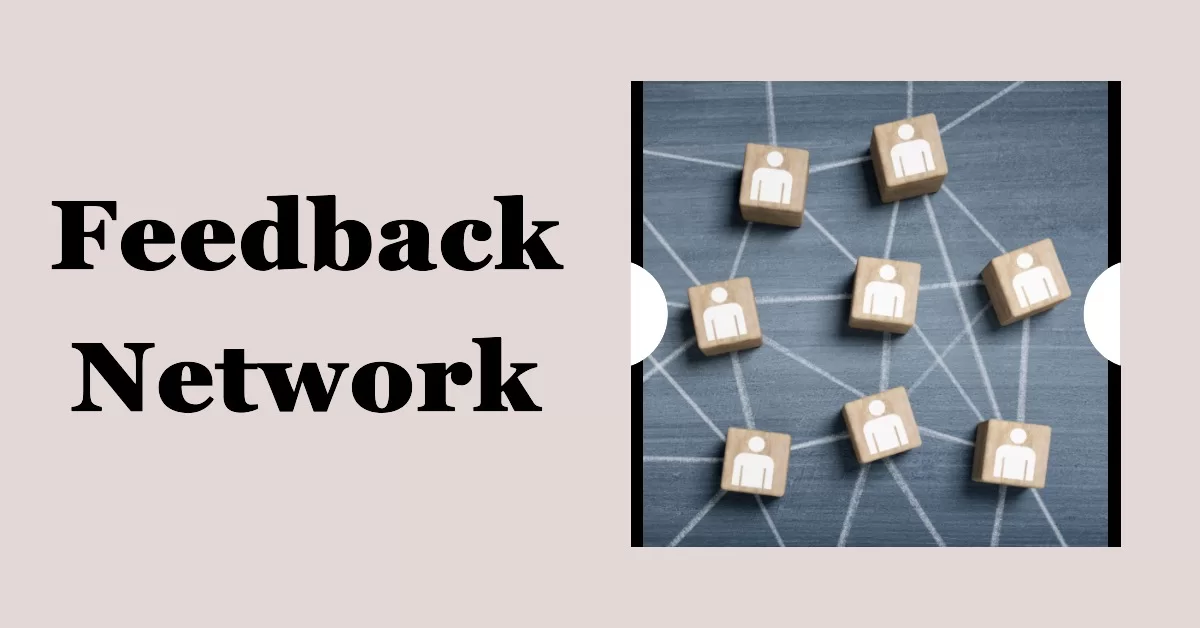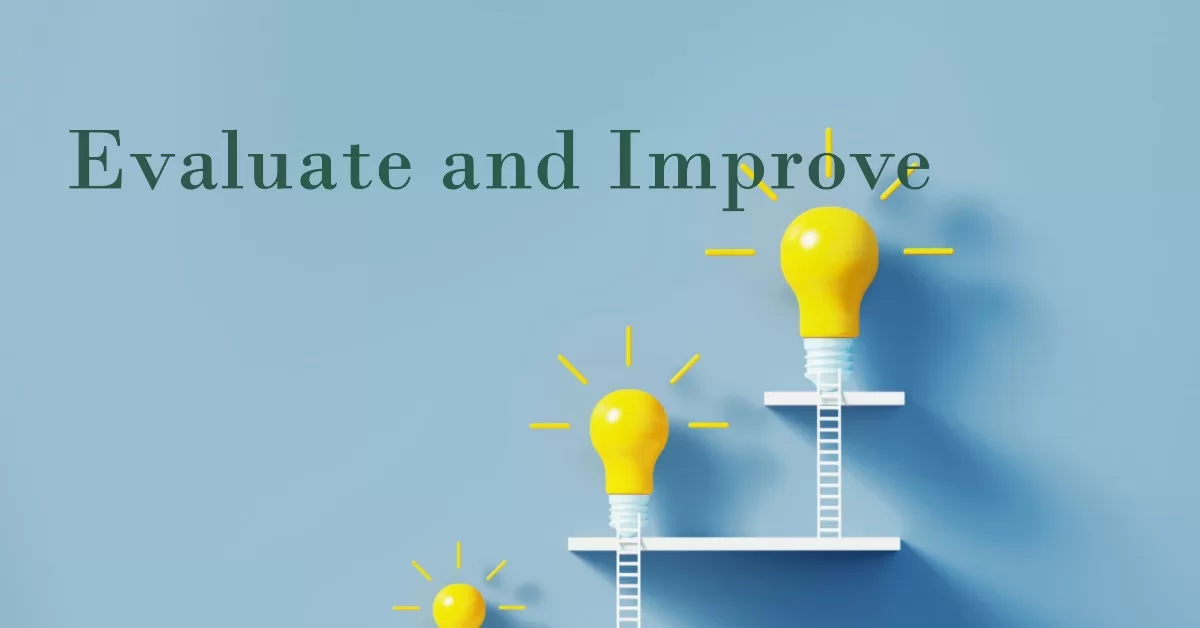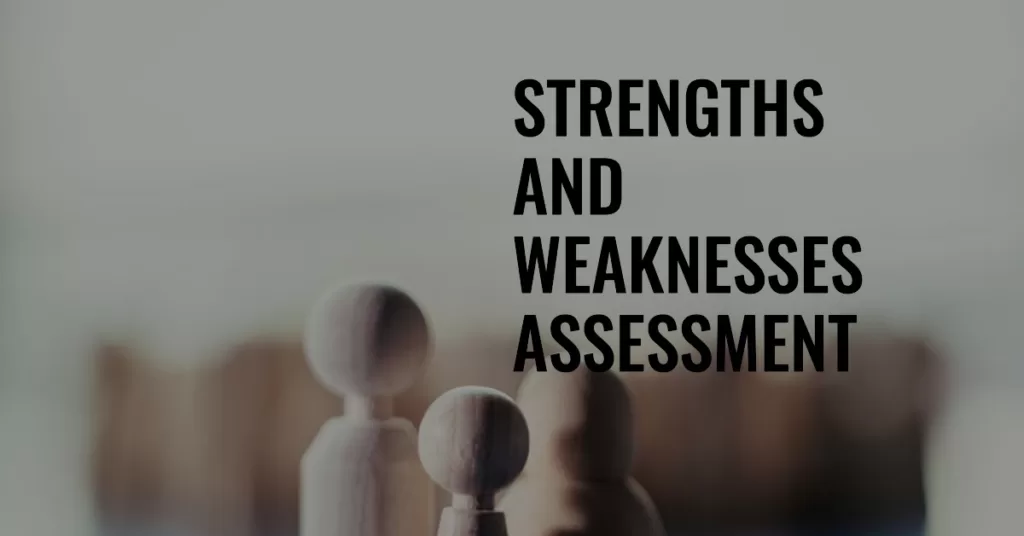In today’s fast-paced world, high performance is a coveted attribute that individuals and organizations alike strive to attain. Achieving high performance requires identifying one’s strengths and weaknesses and developing strategies to optimize them. While it may seem discouraging at first, the process of identifying strengths and weaknesses can be a rewarding journey toward self-discovery and personal growth.
This article explores high-performance strategies for identifying strengths and weaknesses. It delves into methods such as assessing skills and abilities, seeking feedback from others, conducting SWOT analyses, setting realistic goals, developing action plans, leveraging strengths while addressing weaknesses, and continuously evaluating progress to improve further. By implementing these strategies in their lives or organizations, readers can develop a deeper understanding of their capabilities while unlocking new potential for success.
Table of Contents
Key Takeaways
- Assessing skills and abilities through self-reflection and seeking feedback from others is crucial to identifying strengths and weaknesses for high performance.
- Setting realistic goals aligned with one’s interests and creating action plans with clear objectives, timelines, accountability, and efficient resource allocation are important for achieving success.
- Focusing on strengths, identifying complementary skills through effective collaboration, and addressing weaknesses through seeking feedback and investing in education and training can enhance performance and lead to greater success.
- Continuous evaluation and improvement through reflecting on performance, adjusting strategies based on situational factors and feedback, experimenting with different approaches, and learning from both successes and failures are necessary for achieving high performance.
Assess Your Skills and Abilities
The assessment of one’s skills and abilities is a crucial part of the high-performance strategy, as it provides an objective understanding of individual strengths and weaknesses. It allows individuals to identify areas where they excel, as well as areas that require improvement. Assessing oneself can be challenging, but taking the time to understand personal skills and abilities is essential to achieving success.
One way to assess personal skills and abilities is through self-reflection. Self-reflection involves taking a step back from daily activities and reflecting on past experiences, achievements, and challenges. By doing so, individuals can gain insight into their strengths and weaknesses. This method helps individuals become more aware of their behavior patterns and decision-making processes.
Another way to assess personal skills and abilities is by seeking feedback from others. Feedback from colleagues, friends, or family members can provide valuable insights into how others perceive an individual’s strengths and weaknesses. It also gives individuals a chance to see themselves through someone else’s eyes.
Creating measurable goals for personal development can help individuals assess their skills and abilities. Setting achievable goals that align with one’s interests helps create a sense of purpose while tracking progress toward reaching those goals creates accountability. This approach allows individuals to focus on specific areas for development while measuring progress along the way.
Seek Feedback from Others

In order to improve your skills and abilities, seeking feedback from others can be a valuable tool. This feedback can come in the form of constructive criticism, peer reviews, or hiring a coach or mentor. Asking for constructive criticism allows you to receive honest and specific feedback on areas that need improvement while utilizing peer reviews gives you an opportunity to learn from others who have similar experiences. Hiring a coach or mentor provides personalized guidance and support in achieving your goals.
Ask for Constructive Criticism
Requesting constructive criticism is an effective method of identifying areas for improvement in high-performance strategies. It involves seeking feedback from others with the intention of gaining insight into how one can perform better. Constructive criticism differs from plain criticism in that it provides specific suggestions on how to improve, rather than just pointing out flaws.
To effectively ask for constructive criticism, it is important to follow these steps:
- Be clear about what you want feedback on. This helps ensure that the feedback you receive is relevant and actionable.
- Choose someone who is knowledgeable and experienced in the area you want feedback on. This will help ensure that the feedback you receive is accurate and relevant.
- Ask open-ended questions that encourage discussion rather than closed-ended questions that only elicit yes or no answers.
Utilize Peer Reviews
Utilizing peer reviews can provide valuable feedback on one’s work and help identify areas for improvement. Peer reviews involve having a colleague or another individual review your work and provide constructive criticism. This approach is particularly useful in identifying blind spots or weaknesses that you may not have noticed, as well as getting an outside perspective on your work.
Peer reviews can also be used to identify strengths in your work. By receiving positive feedback from others, you can gain insight into what you do well and where your strengths lie. Hearing about the successes of others can also motivate you to improve and strive for excellence in those areas. Overall, utilizing peer reviews is a powerful tool for improving performance by gaining new insights into one’s own abilities and learning from the successes of others.
Consider Hiring a Coach or Mentor
Engaging with a coach or mentor can provide valuable guidance and support for individuals seeking to improve their professional skills. A coach or mentor can help identify strengths and weaknesses in an individual’s performance, provide feedback on specific areas of improvement, and offer advice on how to navigate challenging situations. On top of that, they can serve as a sounding board for ideas and offer insights into the industry that may not be readily apparent.
When considering hiring a coach or mentor, it is important to do your research and find someone who has experience in your field and aligns with your goals. It is also essential to have clear expectations for what you want to achieve through engaging with a coach or mentor. By working closely with someone who has expertise in your area of interest, you can develop high-performance strategies that will enable you to reach new heights in your career.
Benefits of engaging with a coach/mentor:
- A coach can help you identify strengths and weaknesses
- A coach can help you with feedback on specific areas of improvement
Tips for hiring a coach/mentor:
- Research their experience in the field
- Make sure your goals are aligned with their style of teaching
- Present clear expectations and agree on the coaching methods
Conduct a SWOT Analysis
Conducting a SWOT analysis is a valuable tool for identifying both the strengths and weaknesses of an organization or individual, as well as the opportunities and threats present in their environment. A SWOT analysis involves taking a deep dive into different factors that affect performance. This includes assessing internal factors such as skills, resources, and culture, along with external ones such as competition, economic trends, and societal changes. Once completed, the analysis helps to identify areas where improvements can be made while also highlighting potential opportunities.
The SWOT analysis consists of four quadrants: strengths, weaknesses, opportunities, and threats. In the strengths quadrant, one should list all positive aspects of themselves or their organization which set them apart from others. Such qualities could include exceptional customer service delivery or unique product offerings. In the weaknesses quadrant are listed all negative aspects that hinder progress toward achieving goals; these could range from lack of expertise to inadequate financial resources.
Opportunities refer to any external factors that can be leveraged to achieve success – this might include technological advancements or new markets opening up for business expansion. Threats are external factors that pose risks to success – these could range from regulatory changes impacting operations to fierce competition in the market space.
By conducting a thorough SWOT analysis regularly and reviewing it periodically over time (for example annually), individuals or organizations can stay proactive about addressing any issues that may arise while leveraging available opportunities for growth. The process allows them to make informed decisions on how best to allocate resources toward reaching their goals efficiently and effectively while remaining competitive in their respective industries.
Set Realistic Goals
Setting realistic goals is a crucial step toward achieving success and maximizing growth potential for individuals and organizations. When setting goals, it is important to consider both short-term and long-term objectives. Short-term goals are meant to be achieved over a shorter period of time, such as within the next few weeks or months. On the other hand, long-term goals are intended to be realized over an extended period of time, usually several months, years, or even decades in certain cases.
A wise approach to setting realistic goals is the SMART goal-setting framework. SMART stands for specific, measurable, attainable, relevant, and time-bound. Specificity ensures that the goals are clear and precise while measurability enables tracking progress toward accomplishing them. The attainability criterion ensures that the set objectives can realistically be achieved with available resources while relevance means that they align with individual or organizational values and mission statements. Finally, making sure that each goal has a deadline attached to it gives it a sense of urgency.
Another essential consideration when setting realistic goals is having an understanding of one’s strengths and weaknesses. Identifying areas where one excels makes it easier to create achievable targets based on those strengths while acknowledging weaknesses helps create opportunities for improvement through targeted efforts such as training or seeking mentorship from experts in those particular areas.
Setting realistic goals requires careful planning with consideration given to both short-term and long-term objectives using frameworks like SMART alongside personalized reflection about personal strengths and weaknesses. Achieving these well-considered targets brings immense satisfaction which fuels further growth in individuals as well as organizations.
Develop an Action Plan
Developing a comprehensive action plan is crucial for achieving goals and ensuring that the necessary steps are taken to reach desired outcomes. An action plan is a detailed outline of specific actions that must be taken, along with timelines and resources required to achieve a particular goal. It helps in identifying strengths and weaknesses, determining priorities, setting milestones, and measuring progress toward the end goal.
To develop an effective action plan, it is important to first identify the tasks that need to be accomplished in order to achieve the desired outcome. This can be done by breaking down the overall goal into smaller, more manageable tasks that are easier to accomplish and can be treated as milestones. Once these tasks have been identified, they should be prioritized based on their importance and urgency.
The next step is to assign responsibilities for each task to individuals or teams within the organization. This ensures accountability and helps manage expectations regarding who will be responsible for completing each task. Each person or team should also have a clear understanding of what their responsibilities are, as well as what resources they will need to complete their assigned tasks.
It is important to establish timelines for the completion of each task in order to create a sense of urgency and ensure that progress is being made toward achieving the overall goal. By following these steps and developing an effective action plan, organizations can stay focused on their objectives while making efficient use of time and resources.
Leverage Your Strengths

To leverage your strengths effectively, it’s essential to focus on what you’re good at and identify opportunities that allow you to showcase your skills. By honing in on your areas of expertise, you can build a reputation as a valuable asset within your team or organization. Moreover, collaborating with others who possess complementary skill sets can help maximize the impact of your strengths and lead to even greater success.
Focus on What You’re Good At
Maximizing one’s strengths and focusing on what they excel at, rather than trying to improve weaknesses, is a key strategy for achieving high performance. This approach is supported by research which suggests that individuals who focus on their strengths are more likely to experience greater levels of engagement, productivity, and overall satisfaction with their work.
To focus on what you’re good at, it’s important to identify your top strengths. One way to do this is by taking an assessment such as the CliftonStrengths test which provides insights into an individual’s natural talents and abilities. Once you’ve identified your top strengths, consider how you can leverage them in your daily tasks and responsibilities. For example, if one of your top strengths is communication, focus on finding ways to communicate effectively with colleagues or clients in order to build stronger relationships. Additionally, seek out opportunities where you can use your strengths in new and challenging ways to continue developing them.
Find Opportunities to Showcase Your Skills
If you want to enhance your career prospects, you can do so by seeking out opportunities to demonstrate your skills and abilities in a variety of settings. This can be achieved through various means such as volunteering for projects that align with your strengths, participating in professional development programs, or even taking on additional responsibilities at work. By showcasing your skills, you not only gain recognition but also create an opportunity for growth.
Furthermore, finding opportunities to showcase your skills can also help you identify areas where you need improvement. It allows you to receive feedback from colleagues and supervisors which can help you better understand how others perceive your strengths and weaknesses. Through this process, you will be able to develop a more nuanced understanding of what sets you apart from others and what skills require further development. Ultimately, this knowledge will enable you to make informed decisions regarding the direction of your career and provide clarity on the steps needed for continued growth and success.
Collaborate with Others
Collaboration with others can be a highly effective means of achieving professional goals and fostering creativity in the workplace. By working together, individuals can leverage their strengths and compensate for their weaknesses, leading to better results than could be achieved alone. Collaboration also helps to build trust and rapport among team members, which is essential for maintaining a positive work environment.
To make the most out of collaboration, it’s important to follow these steps:
- Identify individuals who have complementary skills or expertise.
- Set clear goals and expectations for the project or task at hand.
- Establish open lines of communication and encourage feedback.
- Hold each other accountable for meeting deadlines and contributing to the team effort.
By following these guidelines, collaboration can lead to increased productivity, improved problem-solving abilities, and a greater sense of satisfaction in one’s work.
Address Your Weaknesses
Improving on areas of weakness is crucial in self-development. Acknowledging and addressing weaknesses can be difficult, but it is necessary for personal growth and development. By identifying weaknesses, individuals can create a plan to improve themselves which can lead to increased confidence, productivity, and success.
A practical way to address weaknesses is by seeking feedback from others. Feedback allows individuals to gain insight into blind spots they may not have been aware of. This information can then be used to create a plan of action for improvement. In addition to that, feedback from trusted colleagues or mentors can provide valuable guidance and support throughout the process.
Another strategy for addressing weaknesses is through education and training. It is important to continuously learn and develop new skills in order to stay competitive in today’s fast-paced world. By investing time and resources into education and training programs, individuals can acquire new knowledge that will help them overcome their weaknesses.
It’s important to remember that everyone has areas of weakness. Rather than focusing solely on improving these areas, it’s also important to leverage strengths as well. By focusing on strengths while improving upon weaknesses, individuals can develop a more well-rounded skillset that will enable them to excel in their roles.
To sum up, addressing weaknesses is crucial for personal growth and development when creating high-performance strategies. Through seeking feedback from others, investing in education and training opportunities, and leveraging strengths while improving upon weaknesses – individuals can create a plan for success that will enable them to achieve their goals both professionally and personally.
Continuously Evaluate and Improve

Continuous evaluation and improvement are essential components of achieving success in any endeavor. To continuously evaluate and improve, one must reflect on their performance, adjusting strategies as needed to achieve goals. Celebrating wins and learning from mistakes are equally important aspects of the process, providing valuable insights that can be used to further refine and optimize one’s approach to achieving high-performance outcomes. By following these key points, individuals can take a proactive approach toward enhancing their skills and capabilities, ultimately leading to greater levels of success in both personal and professional pursuits.
Reflect on Your Performance
An effective approach to enhancing one’s performance is through introspection and self-reflection. By taking the time to evaluate one’s performance, individuals can identify their strengths and weaknesses, allowing them to develop targeted strategies for improvement. This process involves analyzing past experiences and assessing one’s actions, behaviors, and outcomes. It requires an honest examination of oneself without judgment or bias.
Reflecting on one’s performance provides a foundation for growth and development. It allows individuals to set realistic goals based on their strengths while also addressing areas that need improvement. Through this process, individuals can gain insight into their thought processes, emotions, and behaviors that may have influenced their previous performances. With this knowledge, they can then adjust their approach to achieve better outcomes in the future. Ultimately, self-reflection is a powerful tool for personal growth and continued success in any area of life.
Adjust Your Strategy as Needed
Adapting one’s approach based on situational factors and feedback received can lead to more effective outcomes. It is important to recognize that strategies that were once successful may not always work in every situation or for every individual. Therefore, it is essential to be open-minded and willing to adjust one’s strategy as needed.
To ensure the effectiveness of any new strategy, high achievers should take into consideration various situational factors. These factors include the individual’s strengths and weaknesses, environmental conditions, available resources, and time constraints. Feedback from others can also provide valuable insight into areas where improvement is needed. By being aware of these situational factors and utilizing feedback received, individuals can make informed decisions about which strategies are most appropriate for achieving their goals. This approach not only leads to better performance outcomes but also fosters a growth mindset where individuals are constantly seeking ways to improve themselves.
By regularly making use of the following steps, you can ensure the strategy is being constantly optimized:
- Experiment with different strategies
- Seek out advice from others
- Take note of what works and what doesn’t
- Be open-minded about trying new approaches
- Continuously assess progress toward goals
Celebrate Your Wins and Learn from Your Mistakes
It is imperative to reflect on both successes and failures in order to learn from them and improve one’s future outcomes. Celebrating your wins can be a powerful motivator that reinforces the behaviors which have already led to success. It also allows you to recognize the effort and hard work you put into achieving your goals, boosting your self-confidence and sense of accomplishment.
On the other hand, learning from your mistakes enables you to identify areas where improvements are needed. Analyzing what went wrong and what could have been done differently can provide valuable insights for future decision-making processes. By acknowledging your weaknesses, you become aware of areas where growth is necessary, helping you develop skills or acquire knowledge that will enhance your performance in the long run. To put it simply, reflecting on both successes and failures provides opportunities for personal growth, increased self-awareness, improved goal-setting strategies, and ultimately leads to higher levels of performance.
Summary

In order to achieve high performance, it is crucial to identify your personal strengths and weaknesses. Assessing your skills and abilities, seeking feedback from others, conducting a SWOT analysis, setting realistic goals, developing an action plan, leveraging your strengths, and addressing your weaknesses are all key strategies that can help you reach your full potential.
By continuously evaluating and improving yourself, you can ensure that you stay on track toward achieving success. Remember that everyone has areas for improvement, but by focusing on your strengths and working to overcome any weaknesses or limitations, you can ultimately reach new heights of achievement.
With determination and dedication, anyone can become a high performer in their chosen field. By implementing these strategies into your daily routine and committing to ongoing self-improvement efforts, you can unlock the full potential of your unique talents and abilities.




